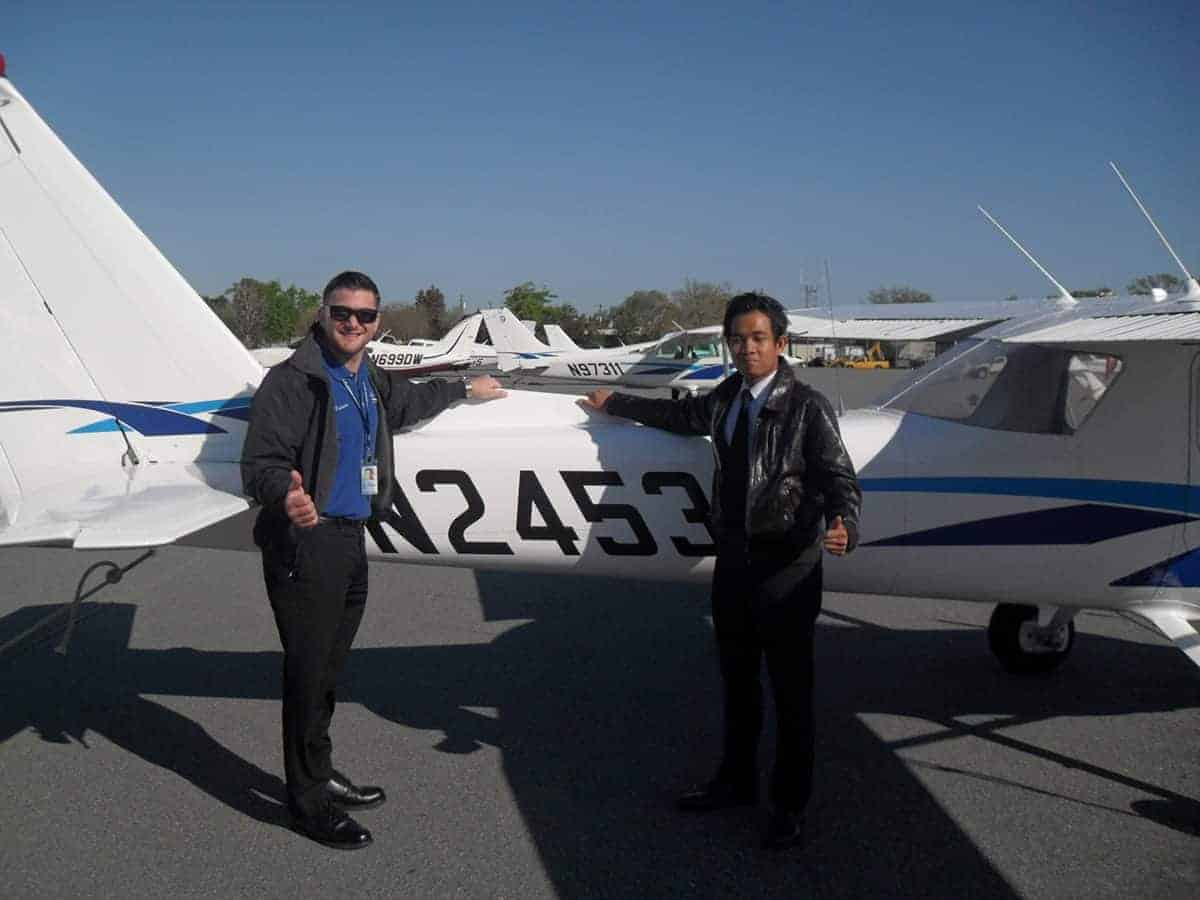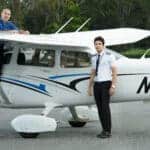How to Read METARs & TAFs: A Pilot’s Ultimate Weather Guide

Weather is one of the most critical factors in aviation, influencing every phase of a flight. Accurate weather interpretation helps pilots make informed decisions, ensuring safety and efficiency. This is where METARs & TAFs come into play—two essential weather reports used in aviation to provide real-time conditions and forecasts at airports worldwide.
METARs (Meteorological Aerodrome Reports) offer current weather observations, giving pilots up-to-the-minute details about wind, visibility, cloud cover, and atmospheric pressure. TAFs (Terminal Aerodrome Forecasts), on the other hand, provide predictions of future conditions, allowing for strategic flight planning and adjustments.
Understanding how to read METARs & TAFs is a fundamental skill for pilots. These reports help assess weather hazards, determine alternate routes, and make critical go/no-go decisions. This guide breaks down the structure of METAR and TAF reports, explaining how to interpret them effectively for safer and more efficient flights.
What Are METARs & TAFs?
In aviation, METARs & TAFs are essential weather reports that provide pilots with real-time and forecasted weather conditions at airports. These reports help in flight planning, ensuring that pilots are aware of potential weather hazards before takeoff and landing.
Definition of METAR (Meteorological Aerodrome Report)
A METAR is an aviation weather report that provides a real-time snapshot of current weather conditions at an airport. It includes crucial data such as wind speed, visibility, cloud cover, temperature, and atmospheric pressure. METARs are issued hourly and are used by pilots, air traffic controllers, and meteorologists to assess prevailing weather conditions.
Definition of TAF (Terminal Aerodrome Forecast)
A TAF is a weather forecast specific to an airport, predicting expected conditions over a set period, typically 24 or 30 hours. Unlike METARs, which report existing weather, TAFs provide insight into future changes, allowing pilots to prepare for potential weather shifts before departure or arrival.
Key Differences Between METARs & TAFs
| Feature | METAR | TAF |
|---|---|---|
| Purpose | Real-time weather observation | Forecast for future weather conditions |
| Issued Every | Hourly (or as needed for updates) | Four times daily (0000, 0600, 1200, 1800 UTC) |
| Validity | Represents the current conditions | Covers 24 or 30-hour forecast periods |
| Components | Wind, visibility, clouds, temp, pressure, remarks | Expected wind, visibility, clouds, weather changes |
METARs help pilots understand current conditions, while TAFs allow them to anticipate changes along their flight path. Both reports are crucial for flight planning and decision-making.
How to Read a METAR Report
A METAR report follows a structured format with coded information. Decoding it correctly is essential for interpreting airport weather conditions.
Breaking Down a METAR Code
A standard METAR report follows this format:
Example METAR:
EGLL 051250Z 22010KT 9999 -RA SCT020 BKN030 18/12 Q1015 NOSIG
Each element in this report represents specific weather data:
1. Station Identifier (ICAO Airport Code)
The first four letters represent the airport ICAO code. In this example, EGLL stands for London Heathrow Airport.
2. Date and Time (UTC)
The 051250Z means the report was issued on the 5th day of the month at 12:50 UTC. The ‘Z’ denotes Zulu time (UTC).
3. Wind Direction and Speed
The 22010KT means the wind is blowing from 220° at 10 knots.
- “KT” stands for knots (nautical miles per hour).
- If “G” appears (e.g., 22010G18KT), it indicates gusts of 18 knots.
4. Visibility (in meters or statute miles)
The 9999 indicates visibility of 10 km or more.
- If the report states 0500, it means visibility is 500 meters, often due to fog or heavy precipitation.
5. Weather Conditions
“-RA” indicates light rain. Other common codes include:
- RA – Rain
- SN – Snow
- FG – Fog
- TS – Thunderstorm
- DZ – Drizzle
6. Sky Condition (Cloud Coverage and Altitude)
The SCT020 BKN030 means:
- SCT020 – Scattered clouds at 2,000 feet above ground level.
- BKN030 – Broken clouds at 3,000 feet.
- If OVC appears, it means overcast conditions.
7. Temperature and Dew Point
The 18/12 means:
- 18°C is the air temperature.
- 12°C is the dew point (the temperature at which condensation occurs).
8. Altimeter Setting (Pressure in hPa or Inches of Mercury)
The Q1015 means the atmospheric pressure is 1015 hPa (hectopascals).
- In the U.S., pressure is measured in inches of mercury (e.g., A2992 means 29.92 inHg).
9. Remarks Section (Additional Weather Details)
The NOSIG means “No Significant Weather Change” is expected in the next two hours. Other remarks may include wind shear, runway conditions, or temperature trends.
By breaking down each component of a METAR report, pilots can quickly assess current weather conditions at an airport, making informed decisions about flight safety and planning.
3. How to Read a TAF Report
A TAF (Terminal Aerodrome Forecast) provides a detailed weather forecast for a specific airport, helping pilots anticipate weather changes over a given period. Unlike METARs, which report current conditions, TAFs allow pilots to prepare for potential weather hazards before departure or arrival.
Breaking Down a TAF Code
TAFs follow a structured format similar to METARs but contain additional forecasting elements. Here’s a sample TAF report and its breakdown:
Example TAF:
TAF KJFK 051730Z 0518/0624 18012KT P6SM BKN050
TEMPO 0520/0524 4SM -SHRA OVC030
FM060000 20010KT 5SM SHRA BKN025
PROB30 0603/0606 2SM TSRA OVC015CB
Each part of this TAF provides essential weather details:
1. TAF Structure and Forecast Duration
- KJFK: ICAO airport code (John F. Kennedy International Airport).
- 051730Z: Issued on the 5th day of the month at 17:30 UTC.
- 0518/0624: Forecast period from the 5th at 18:00 UTC to the 6th at 24:00 UTC (30-hour forecast).
2. Wind and Visibility Forecast
- 18012KT: Wind from 180° at 12 knots.
- P6SM: Visibility is greater than 6 statute miles.
3. Cloud Cover and Weather Phenomena Predictions
- BKN050: Broken cloud layer at 5,000 feet above ground level.
- OVC030: Overcast clouds at 3,000 feet.
- -SHRA: Light rain showers expected temporarily.
4. Probabilities and Change Indicators
TAFs include special change indicators to show how weather conditions may evolve:
- TEMPO 0520/0524 4SM -SHRA OVC030: Temporary (TEMPO) weather changes between 20:00 and 24:00 UTC with reduced visibility to 4 statute miles and overcast clouds at 3,000 feet.
- FM060000 20010KT 5SM SHRA BKN025: “FM” (From) indicates a significant change, where from 00:00 UTC on the 6th, the wind will shift to 200° at 10 knots, with light rain showers and broken clouds at 2,500 feet.
- PROB30 0603/0606 2SM TSRA OVC015CB: “PROB30” (30% probability) between 03:00 and 06:00 UTC of thunderstorms (TSRA) with overcast cumulonimbus clouds at 1,500 feet.
By understanding these elements, pilots can predict upcoming weather trends and make necessary adjustments to their flight plans.
Practical Applications of METARs & TAFs in Flight Planning
METARs & TAFs are critical tools for flight planning, helping pilots assess weather conditions before departure and throughout the flight.
How Pilots Use METARs & TAFs for Pre-Flight Weather Assessment
Before a flight, pilots analyze METARs to understand current airport conditions and TAFs to anticipate weather changes during their route and at the destination. This helps in:
- Identifying wind patterns for takeoff and landing.
- Assessing visibility conditions for safe navigation.
- Predicting cloud cover and precipitation, which may affect approach and landing procedures.
Identifying Critical Weather Conditions
Certain weather conditions reported in METARs & TAFs require careful attention:
- Low Visibility (≤1 SM or 1600m): May lead to delays, instrument landings, or diversions.
- Turbulence (TS, CB, WS): Thunderstorms (TS), cumulonimbus clouds (CB), and wind shear (WS) indicate hazardous flying conditions.
- Icing Risks (-SN, FZRA, OVC Low Altitudes): Freezing rain (FZRA) and low overcast cloud layers can lead to aircraft icing, requiring de-icing procedures or altitude adjustments.
Making Go/No-Go Decisions Based on Weather Reports
- Good Weather (VFR Conditions): If visibility is high, winds are stable, and no major storms are forecast, pilots proceed with the flight as planned.
- Marginal or IFR Conditions: If low visibility, strong winds, or convective weather is present, pilots may delay departure, choose an alternate route, or prepare for instrument flight procedures.
- Severe Weather (Thunderstorms, Wind Shear, Freezing Rain): If conditions are unsafe, pilots may opt for a no-go decision or plan for a diversion.
Understanding how to interpret METARs & TAFs allows pilots to make smarter flight planning choices, ensuring safety and efficiency in every operation.
Common Challenges and Mistakes in Interpreting METARs & TAFs
While METARs & TAFs are essential tools for pilots, misinterpretation can lead to poor decision-making. Errors in reading weather reports can result in unexpected in-flight challenges, diversions, or delays. Here are some common mistakes pilots should avoid:
Misreading Wind Direction and Visibility Restrictions
Wind direction in METARs is reported in degrees true, not magnetic, which can lead to miscalculations during takeoff and landing planning.
Visibility values can vary by region; some countries report visibility in meters, while others use statute miles, which can cause confusion if not carefully interpreted.
Overlooking Significant Weather Changes in TAFs
Pilots sometimes focus only on the main forecast period and ignore transition indicators like FM (From) and TEMPO (Temporary changes), which signal short-term but significant shifts in weather conditions.
Failing to account for probability forecasts (PROB30, PROB40) can lead to unexpected encounters with adverse weather such as thunderstorms or fog.
Not Considering Temporary Conditions (TEMPO, BECMG) in Long-Haul Flights
On longer routes, weather changes forecasted in BECMG (Becoming) or TEMPO (Temporary) sections of a TAF can alter flight conditions en route or at the destination.
A “good” TAF at departure time may not reflect conditions upon arrival, especially in dynamic weather regions where sudden shifts occur.
Avoiding these common pitfalls requires careful interpretation of every detail in METARs & TAFs, ensuring pilots are fully prepared for changing weather conditions throughout their flight.
Tools and Resources for Accessing METARs & TAFs
Pilots rely on real-time weather reports to ensure safe flight operations. Several tools provide access to METARs & TAFs, allowing pilots to retrieve up-to-date weather data before and during a flight.
Best Websites and Apps for Real-Time METARs & TAFs
Aviation Weather Center (aviationweather.gov): Provides worldwide METARs & TAFs, radar, and satellite imagery.
NOAA ADDS (aviationweather.gov/adds): A comprehensive tool for pilots to access decoded weather reports.
Windy (windy.com): Offers METARs & TAFs with visual weather maps.
ForeFlight: A premium app that integrates METARs & TAFs with flight planning tools.
How to Get METARs & TAFs via ATIS (Automatic Terminal Information Service)
ATIS broadcasts pre-recorded airport weather information, including METAR reports, active runways, and NOTAMs (Notices to Airmen).
Pilots can listen to ATIS reports via VHF frequencies at major airports or check digital ATIS via aviation apps.
Using Flight Planning Software to Integrate Weather Reports
- Advanced flight planning tools like ForeFlight, Garmin Pilot, and SkyVector allow pilots to overlay METARs & TAFs on their planned route, ensuring weather data is seamlessly integrated into navigation and alternate route planning.
- Airlines and commercial pilots also receive METARs & TAFs through aircraft ACARS systems, enabling real-time weather updates while in-flight.
By leveraging these tools, pilots can access accurate, real-time weather data, making informed decisions that enhance flight safety and efficiency.
Conclusion
Understanding METARs & TAFs is essential for every pilot, as these reports provide critical weather data needed for safe and efficient flight operations. METARs give real-time conditions at airports, while TAFs help forecast potential weather changes, allowing pilots to make informed decisions before takeoff and during flight.
Regular practice in decoding these reports enhances a pilot’s ability to quickly assess weather conditions, anticipate challenges, and adapt flight plans accordingly. By mastering wind direction, visibility restrictions, cloud coverage, and forecast trends, pilots can reduce risks associated with adverse weather.
To efficiently interpret aviation weather data, pilots should cross-check METARs & TAFs with other weather sources, such as radar images, ATIS broadcasts, and real-time flight planning tools. Staying updated on changes and reviewing trends in these reports improves situational awareness, leading to safer flights and smoother operations.
Mastering METARs & TAFs is not just a regulatory requirement—it’s a skill that enhances flight safety, decision-making, and overall confidence in the cockpit.
Contact the Florida Flyers Flight Academy India Team today at +91 (0) 1171 816622 to learn more about the Private Pilot Ground School Course.



